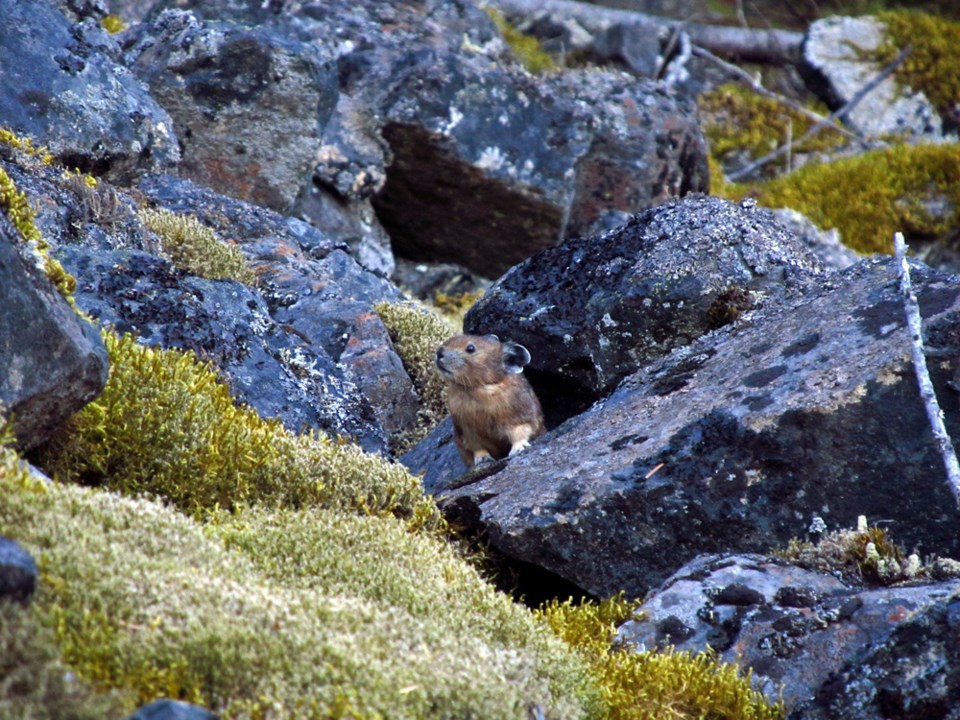
Imagine you’re hiking through the alpine on a summer day. As you pass a rockslide, you hear a shrill EEEEEEEEEP. It’s the high-pitched alarm call of the pika, letting his buddies know a large, awkward mammal is lumbering down the trail. If you’re lucky, you’ll see him poke his cute, big-eared head out from behind a rock, just to let you know he means business.
However, on a really hot day, he might not be so keen to say hello. After temperatures reach the mid 20s Celsius, a few hours in the sun may cause this well-insulated fur ball to overheat and die. That’s why the species is so sensitive to climate change—they really can’t take the heat.
Or so we thought.
Researcher Dr. Johanna Varner at the University of Utah has recently identified a population of pikas in Oregon that have found a way to spend less time in the heat foraging for food. They do it by eating A LOT of moss.
“By consuming mosses that grow on the rockslides where they live, the pikas are released from foraging outside the safety and shady heat buffer of the rocks, where they can overheat or be killed by weasels and hawks,” said Varner. “Few herbivores consume moss because it’s so nutritionally deficient. The pikas in our study actually set a new record for moss in a mammal’s diet: 60 per cent.”
But if moss is so nutritionally deficient, how do they survive?
To understand all this, one must first be aware that pikas, like all of their hare and rabbit relatives, eat their own poo. Well, more accurately, some types of their poo. Pikas produce two kinds of droppings, fecal pellets (the round, dry ones), and caecal pellets (the shiny wet ones). It’s the wet ones that they find most appetizing.
“They seem to be able to concentrate nitrogen and protein in the caecal pellets, probably because they have gut microbes that are really efficient at fermenting fibre, and extracting protein from low protein food sources,” explained Varner. “When they re-ingest those pellets, the microbes have liberated those nutrients, and they’re actually able to absorb them.”
Varner said it’s through this mechanism that the pikas are able to survive on the moss. “The nutritional content of the caecal pellets is about six times higher in terms of protein content than the moss they are able to ingest.”
It may be one of the most fascinating examples of recycling in nature.
The study also found that these low-elevation pikas “build much smaller food caches to survive the winter, compared with pikas in typical high-elevation habitat.” One of the reasons may be that warmer temperatures mean moss is available year-round.
This is certainly not the case up here in the northern Rockies where pika habitat is often well below freezing, and the storage of food is essential.
However, what the study tells us is that in some places, pikas are doing things to compensate for heat—things that we didn’t expect. That might mean that despite the significant decline of pika populations throughout North America, there’s some good news to be had.
Niki Wilson
Special to the 51°µÍř
